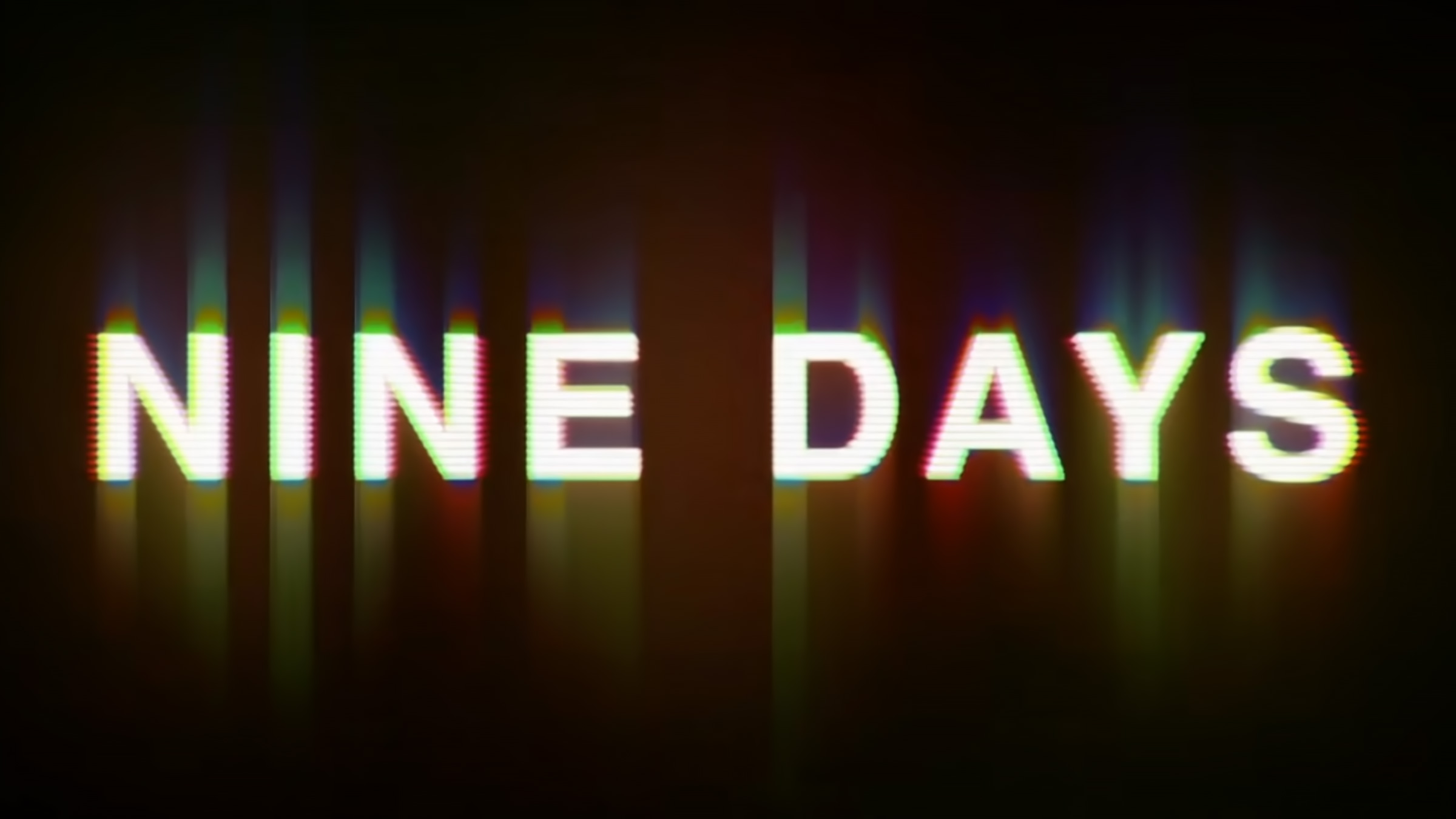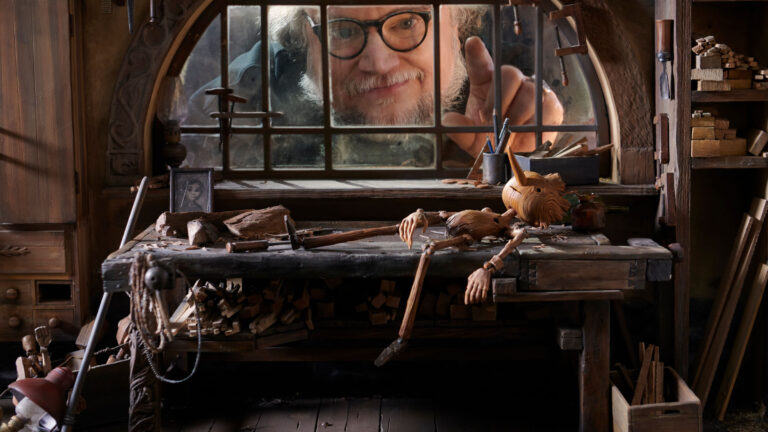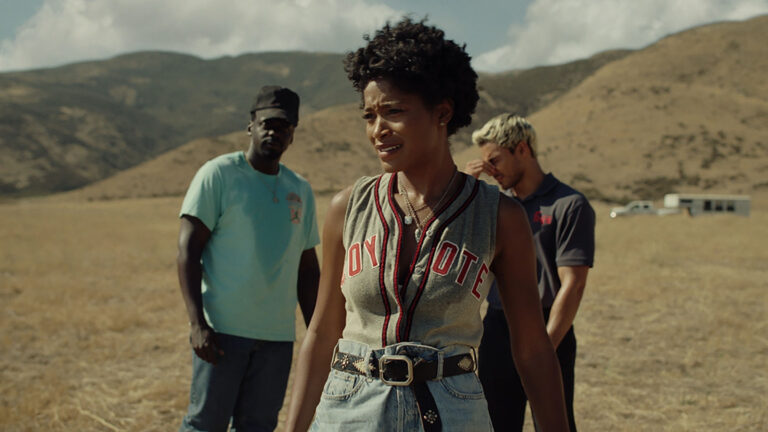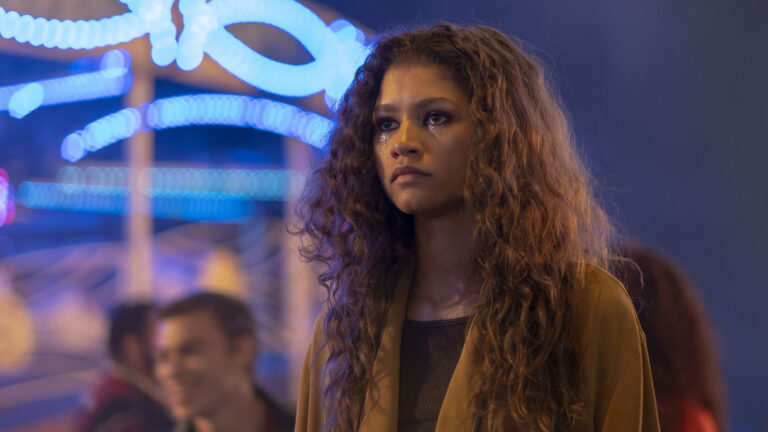Today we’re speaking with part of the team who worked on the beautiful and thought-provoking film, Nine Days, which was nominated for an Independent Spirit Award for Best First Feature and for Sundance’s Grand Jury Prize.
With us on the call are: writer/director Edson Oda, Editors, Michael Taylor, ACE, and Jeff Betancourt, Additional Editor Zack Boger, and Associate Editor Phillip Kimsey.
This is Edson’s first film as director, though he’s directed numerous short films and has even edited several himself.
Michael Taylor has edited films including The Farewell (for which he was nominated for an ACE Eddie), Skin, and the 2010 film Stranger Things.
Jeff Betancourt has edited films including Black Christmas, Crouching Tiger, Hidden Dragon: Sword of Destiny, Poltergeist, When a Stranger Calls, The Exorcism of Emily Rose, and Harold and Kumar go to White Castle.
Zack Boger has edited TV series including The Vanilla Ice Project and Get Out of my Room, and was an additional editor on the film The Outside Story and an Associate editor on Lady of the Manor.
Phillip Kimsey was an assistant editor on The Woman in the Window. And an editor on films including Brooklyn Love Stories and Mercy. He was an assistant editor on The Queen’s Gambit and True Detective.
Listen while you read…
HULLFISH: I loved the great opening sound design transforming into score. Talk about using that sound design and the score to do world-building right at the beginning of the movie.
TAYLOR: We had about three weeks of collecting point-of-view material for the film. It wasn’t really collecting because Edson [Oda] was actually directing scenes in Salt Lake City with Wyatt [Garfield], our primary D.P. For instance, Amanda playing the violin was shot then.
We have two kinds of point-of-view shots in the film. We have what I would call the primary stories, characters such as Amanda and Fernando, the paralyzed man. I think most of that was actually shot in Salt Lake by Edson and his team there, but then we also had a team in Brazil shooting additional footage and a team in Los Angeles. All of this was being fed to New York city to Goldcrest Post where I was working with Phillip [Kimsey] and with Kwesi Collison, who is our superb executive producer/post-production supervisor. We were in this little room, and then we got an intern, Julia.
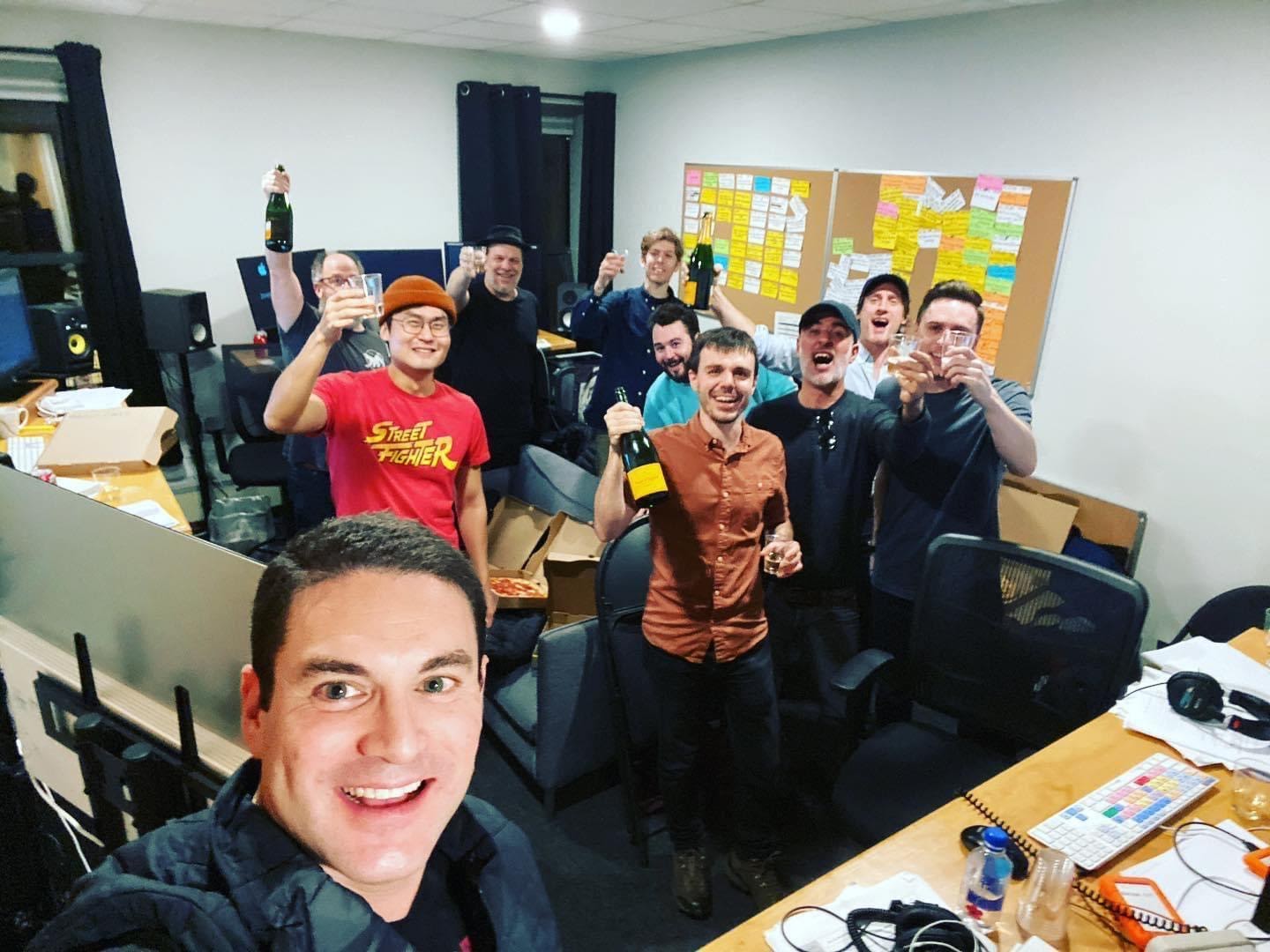
Basically, we used as much sound as we could from the original footage and we would amplify the sound. Of course, all this got redone, amplified, and improved by Skywalker Post and our superb re-recording mixer, which was Brandon Proctor, and before him Mac Smith, who was our sound designer.
Another thing about the film was that a lot of the music existed before we made the film, even before the POV units. Antonio Pinto had to write that violin score for Amanda to be playing. Edson handed me about a six-minute piece at the beginning. He said, “This point is when we see the child’s violin. At this point is when we see she’s having the piano lesson with the piano teacher.” So, one of the first things that I had to do was actually cut that opening montage in July.
There was a preliminary version and I was always going back and forth with Edson saying, “Let’s keep tweaking it,” because eventually, we did have to put a version of that montage up on the real TVs so that Winston Duke could be watching that so that we could do the first shot of the film.
The crazy part of it, which Edson talked about a lot with me in July, was that Edson was in pre-production for the main part of the movie while he was in post-production on these POV units. This was a movie where we had to picture lock all these little stories as we called them. I had a bin that I’d started with Philip and my task every day was to sit down with Edson for about three or four hours because he had many other things to do. My goal was always: how many of these clips can I move from “not done” to “approved by Edson” so then I can give them to Phillip and he can figure out how to get them to the TVs.
HULLFISH: Hey, before you continue, I want to get Edson to explain to the people who haven’t seen the movie, what TVs and what stories he is talking about.
ODA: Some people call the film a “spi-fi,” as in spiritual-fi. The whole story happens in this distant reality, I like to call it a pre-life reality. We see this interviewer, played by Winston Duke, and he interviews souls and chooses one soul for the privilege of being born. We watch his whole process that takes nine days and during these nine days he sees a lot of candidates. One of the candidates is going to be the one that he’s going to choose to be born and the other candidates are going to disappear.
We would stay up all night and religiously photograph every single monitor over and over again in different sizes, in different configurations.
The thing that Mike was talking about with the TVs is after he chooses someone, he is able to see what they’re doing in the real world through their eyes. What they see, he sees on the TV. So, he has 30 TVs in his living room so he’s going to be able to see 30 POVs of the different souls he sent to the world from birth until now.
TAYLOR: We would stay up all night and religiously photograph every single monitor over and over again in different sizes, in different configurations, with pans and with moves, and we’d be doing this at 3am. Then, we’d also be photographing all the VHS machines and pressing all the buttons “on,” “off,” “tape out,” and “tape in” because we never knew what we would need. It was a nice opportunity for me as an editor because usually I’m always complaining about why I don’t have a shot, or why I don’t have this insert or this closeup, but it was really my responsibility to make sure that I had everything that we needed.
BOGER: We were on such an accelerated timeline because we knew that if we got into Sundance, we only had a certain number of weeks to finish the movie and then get it to where people can actually see it. So, I remember in October I think, I said, “Edson, producers are telling us we have to lock some final visual effects for the movie,” and Edson, Michael, and I had only been working together for about three weeks at that point. We were being told that we had to start finishing the movie before we even edited it. So, we were kind of doing everything in the wrong order.
HULLFISH: So all of that stuff that’s in the monitors had to be shot and edited before you could shoot the scenes with the people watching the screens. Can you talk a little bit about the schedule of when the stuff in the screens was shot and how much time did you have to get it in the screen so that you could shoot the living room scenes?
ODA: It was kind of insane. I remember just going to the meetings with producers and one of my requirements was that we need to shoot this prior to principal photography and everything has to be done practically. Then, later in the process, it was very hectic and difficult because I needed to shoot all the stuff in the TVs during prep for the schedule to work. So while we were prepping, we had about nine days to shoot the hero TVs—hero TVs being TVs that have something to do with the story. So, all those scenes were shot in Utah while we were doing prep for principal photography.
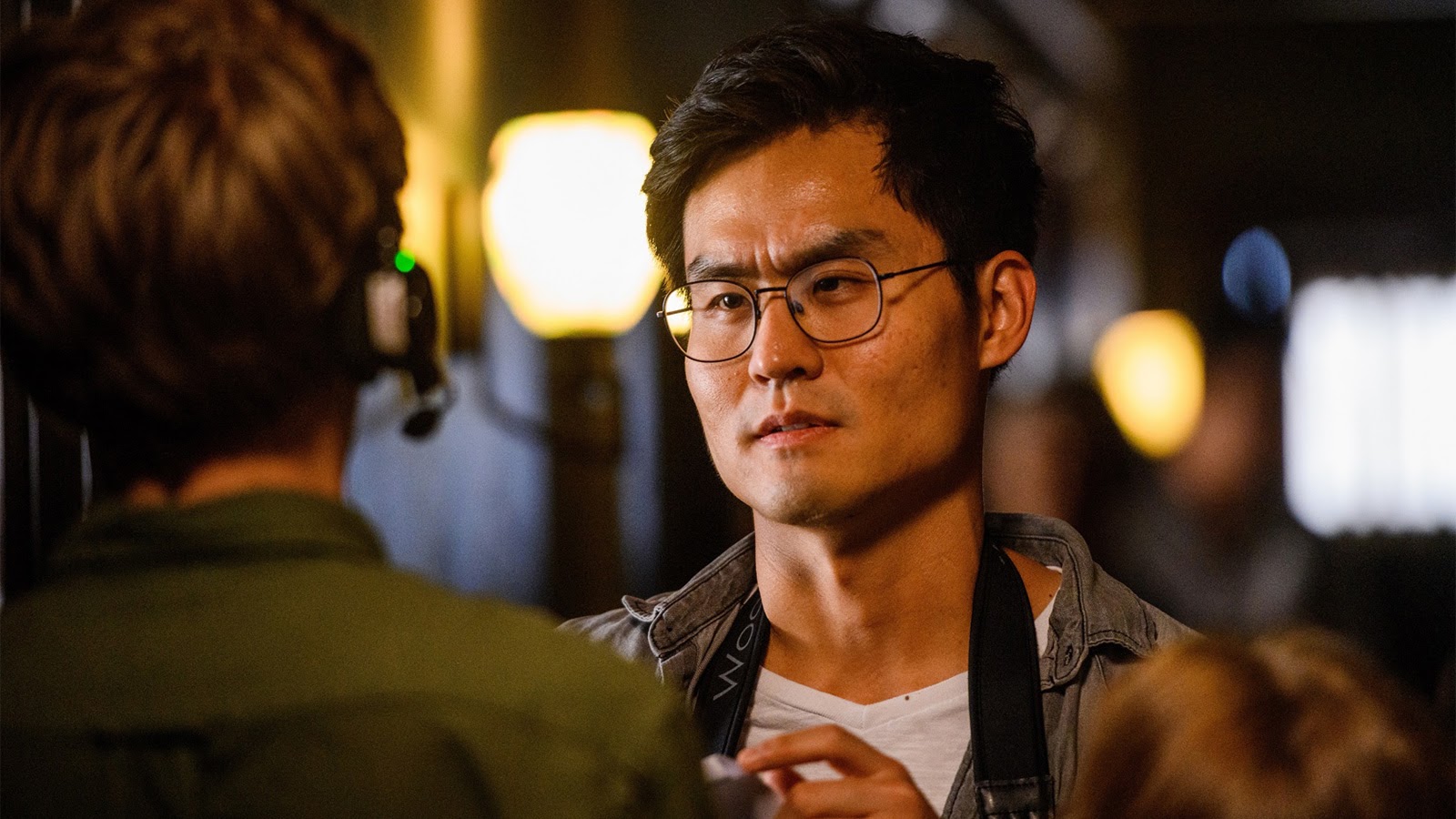
Then, besides those scenes, we knew that we’d need more material of things that would happen with TV X, TV Y, or TV Z, just people doing daily activities. When we started shooting the main TVs, we could do that, but I think for the other TVs we just needed to accept that it would be more generic material. Mainly, everything was edited and then we said, “Okay, now we need to cut everything here, so on the day we can feed those TVs.” The problem is making sure we didn’t lose a lot of time on set. It was very, very challenging logistically, but I think in the end we just found a way to make it work.
HULLFISH: There’s this opening montage where you’re seeing the screens and you’re realizing you’re looking at people’s lives. Then after watching this, the screens, we cut to Will for the first time. I was really intrigued by the importance of finding the exact moment for that cut.
BETANCOURT: We experimented so much with that opening. That whole sequence at the beginning might’ve been one of the last scenes we locked. It was difficult to figure out how much to show of Amanda’s life and when to introduce Will, but we would try to have friends and family screenings with little groups of people every week because of our schedule.
We could figure out pretty quickly that that was the best version, even though we lived with all these different iterations, but it was that sense of mystery. What are we watching and how are we giving out these little pieces of information so that when we land on Will, it had the most emotional impact at the point you’re mentioning now? There was a lot of experimentation to get there, but I’m pretty happy with it.
What are we watching and how are we giving out these little pieces of information.
TAYLOR: We already had these shots of Winston where he’s taking notes on the candidates and we see them at different times. “So-and-so, 10,497 days since chosen.” Instead of saying years, it would be the number of days they’ve lived on earth. Because Amanda was our first character, we actually had an insert unit in LA near the end that wrote some attributes of Amanda, like a self-starter, a prodigy on the violin…things so that we could understand as she was growing up that Winston’s character, Will, was noticing these facets of her personality.
In fact, Edson, as I recall it, the pickups were done in LA but we were in New York, and I think you actually had a live feed of them in LA. It was like Zoom. so you could direct them remotely, as I recall.
HULLFISH: At the end of the first night, you see the TV screens and each person is starting to go to bed, the lights go off, and the main character, Will, leaves his house and there’s a fairly lengthy shot of him walking along a darkened field with a lantern. Tell me about the value of why that shot is there? What’s the reason for that?
ODA: I think it was just to establish that there is this place because later we would see that again, but it was a lot about world-building.
TAYLOR: I just rewatched the movie myself a few nights ago, Edson, and I have to say I think that one of the most dramatic scenes in the entire film—and I’m not giving anything away—is when it’s a black field, the spotlight goes on, and there’s Winston Duke pretending that possibly he’s an actor. That element is just so stunning.
ODA: We added that because there’s a storyline of the spotlight.
We can’t possibly shoot this script in 20 days. Cut 15 pages and we’ll give you another day.
TAYLOR: Steve, I know that your show you do is primarily for editors and post people to learn the process of how we make the movies, but assuming that some people have overlapping jobs, something to remember about this movie is that if you’re a director such as Edson, what happens is the producers come to you and say, “Edson, your script is too long. We can’t possibly shoot this script in 20 days. Cut 15 pages and we’ll give you another day.” That’s what they really did.
So, Edson cut about 15 pages including a lot of the material with the spotlight and some of the other scenes involving Kyo, Benedict Wong’s character. So, the script got shorter and we got more days. Then, every time I’m walking onto the set I’m saying, “Oh, I thought we cut that scene.” In fact, I remember the last morning on September 7th I think, I thought we’re all going to be drinking champagne or something like that and Edson is there in the garage shooting this scene of the spotlight being fixed and that beautiful shot of the spotlight going on.
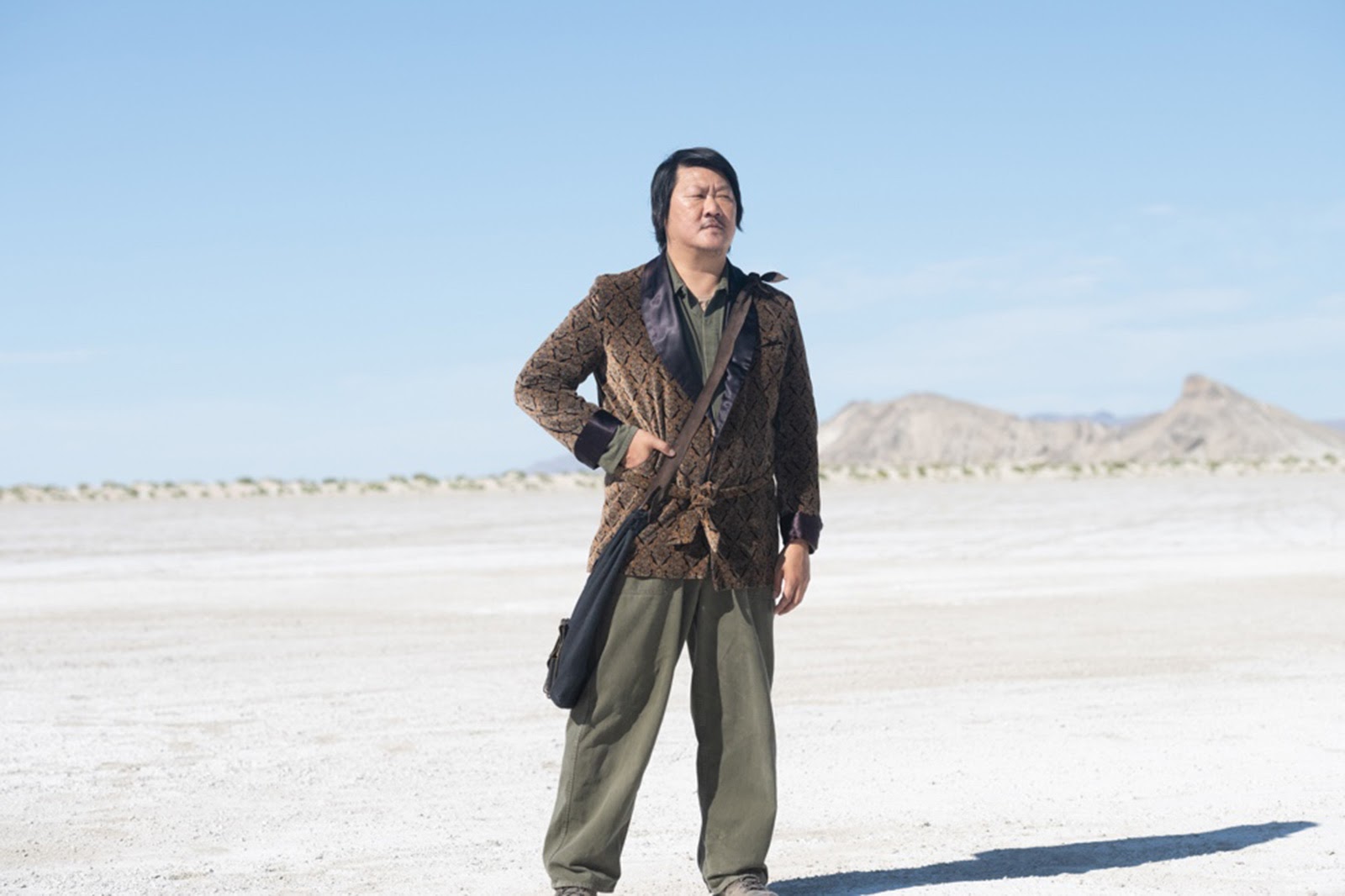
Again, just a lesson for directors out there and for post people because we can encourage our directors to do this, even if their producer tells you there’s no time to get the shots, if they’re important shots and if you’ve got a director who’s really passionate like Edson, you’re going to get those shots.
HULLFISH: There’s a really interesting sequence as we come to understand what the movie is about. A bunch of people starts to show up to be interviewed, and instead of seeing the full interviews of every single person, they’re edited so that they’re intercut.
BOGER: We had hours and hours of footage of people talking about folding chairs. Michael cut about an hour-long cut of it. I remember one of my first tasks was figuring out how to get this into something that we can actually watch. So, I did one of the early versions of it starting with one candidate and introducing the other candidates in the course of the interview so that you understand the points of the interview, but you don’t have to watch the whole thing.
The original way it was scripted was that you watched the full interview once with one candidate, and then you watch a montage with other people, but we don’t need to hear it, especially if we’re going to hear it again when Zazie Beetz’s character is introduced. We don’t want to hear it three times, so let’s just hear it twice.
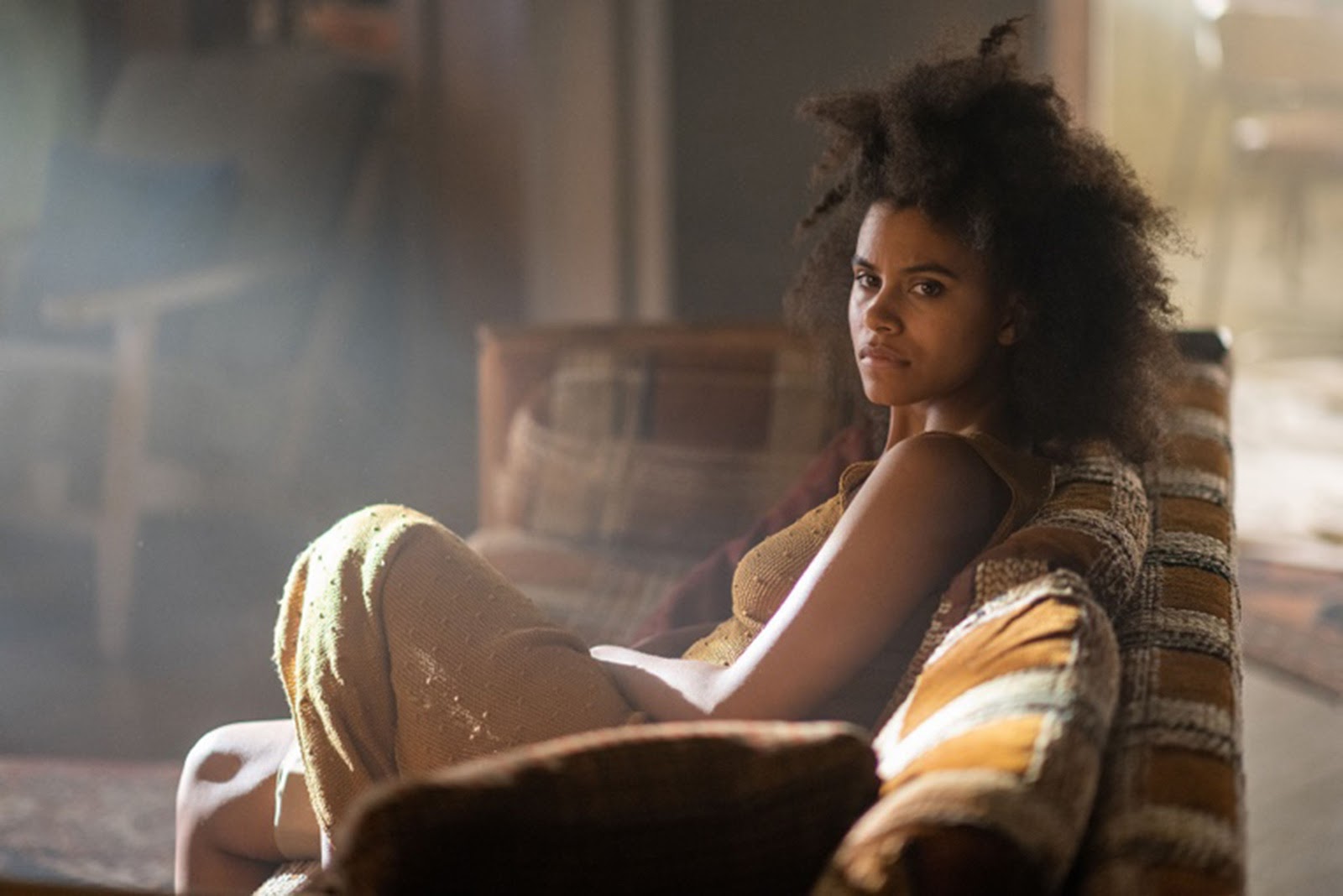
BETANCOURT: One of the brilliant things about that sequence that Zack did was that not only is it cool to have them all intercut, but you’re also getting little glimpses of each of the people’s personality and their character. You’re getting a little bit of Tony Hale’s humor and getting different aspects of them all. So, not only are you getting this interesting sequence, but we’re already getting a big jump start on getting to know who these people are.
HULLFISH: This concept of seeing and hearing the same thing with multiple people extends throughout the movie. What were some of the ways that you treated or thought about those transitional repeats?
TAYLOR: It seems that a lot of the initial scenes when Tony Hale comes in and he is shown by Will that, “This is a lamp,” and then Tony touches it and says, “Light.” All of that is designed to intercut so that just as we think we’re going to see this one character get a whole tour of the house, suddenly Tony Hale becomes Maria, Arianna Ortiz’s character, who then sees the shower. Then, instead of Arianna coming out of the bathroom, suddenly now that’s David Rysdahl’s character, Mike, approaching the monitors, and then as we go to a reverse, now it’s Bill Skarsgård instead.

ODA: It was interesting because the test screenings taught us that sometimes the audience didn’t need to hear that or listen to that again. It’s kind of interesting how audiences are very, very smart about those things. Usually, we just decided to make those things shorter.
TAYLOR: That’s something that I have to learn and relearn on almost every movie I do, that the audience is smarter than we think they are. Very often we feel that we have to put in two or three examples to make our point. It’s so important to test your film over and over.
Unfortunately, in this period of COVID, those of us who are editing films right now, our test screenings are all virtual. That really is just going to rob the filmmaker of the experience that they would’ve had because part of a test screening actually is sitting in the room and watching where people fidget and watching a scene that you thought was fine and realizing that it’s painfully slow. Maybe someone even gets up to get a drink or to go to the bathroom and you think, “Oh my God. This thing is dying.” You need that in-person feeling.
That really is just going to rob the filmmaker of the experience that they would’ve had.
HULLFISH: There’s an interview with Emma, and I’m interested to find out how much of that pace and rhythm of that conversation is led by the actors’ performances and how much was specifically constructed? What was the balance there?
ODA: She played the scene in a way that she’s messing with Will’s tempo. He has kind of this clock. When she comes in, she takes that power. She interrupts him. It’s interesting because then as you’re editing that scene when they’re talking, I felt like, “Yeah, right away she’s gonna interrupt him,” and I remember when we were playing that scene, we made it clearer that she’s doing that through the cuts.
I remember later, as Winston wanted to speed things up, she then starts slowing down because she’s trying to understand better. Every time we’d go to her, we would add extra beats, and then when we went to Winston, he would just say his lines right away. So, for her, we would cut to her and then wait a little bit before she says something. Then, when we cut to Winston he would speak right away. We would play with this dynamic.
TAYLOR: That was scripted, but we enhanced that in the edit. There actually was one time I came on the set at about three in the morning and it was in the room in the house that has just filing cabinets, we’d call it the “cabinet room.” There’s a scene in that where we did a wide shot and it is sort of lit by moonlight outside. On one side is Kyo and on the other side is Winston Duke. It’s a fairly long scene but it’s really beautiful.
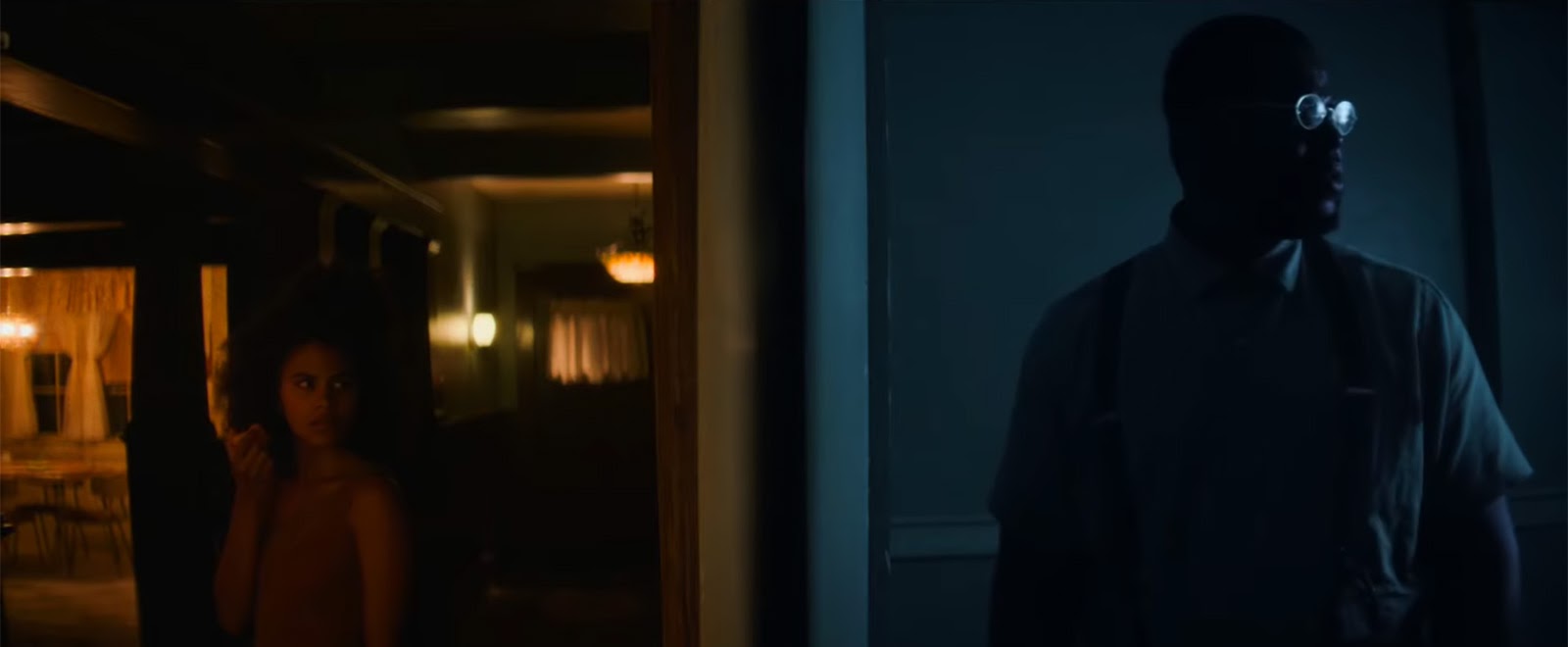
HULLFISH: I think it’s a oner, isn’t it?
TAYLOR: It is a oner and we were supposed to have closeups, but it was three in the morning—and of course this was the unusual aspect of the movie that I was editing just off set, so I could come back and forth the whole time and sometimes I would come out to the set just because I was really tired of assembly editing and just wanted some fun or wanted some craft service or something like that—and I watched maybe take seven and eight.
I would come out to the set just because I was really tired of assembly editing and just wanted some fun.
Then, I just whispered to Edson and said, “Why don’t you just do it one or two more times? It seems really good. Maybe play with the tempo, but I don’t think you want to do closeups.” So, instantly, I was the hero with the producers. They were like patting me on the back. “Maybe we’ll get out of here by five in the morning.” In the end, that scene was really tough to cut because it was too long and I think we had to trim really hard at the front end and trim at the back.
ODA: Somehow we cut out of it sooner.
HULLFISH: Did the structure stay fairly similar to the script?
BETANCOURT: For the most part, we were locked into certain things because we did have the nine days and keeping track of those nine days and nights. In that, there were a few sequences that we were able to move around with Emma, especially tracking Emma’s relationship with Will and figuring out their relationship, moving a few of her scenes earlier so we sort of set their relationship a little bit more securely at the beginning.
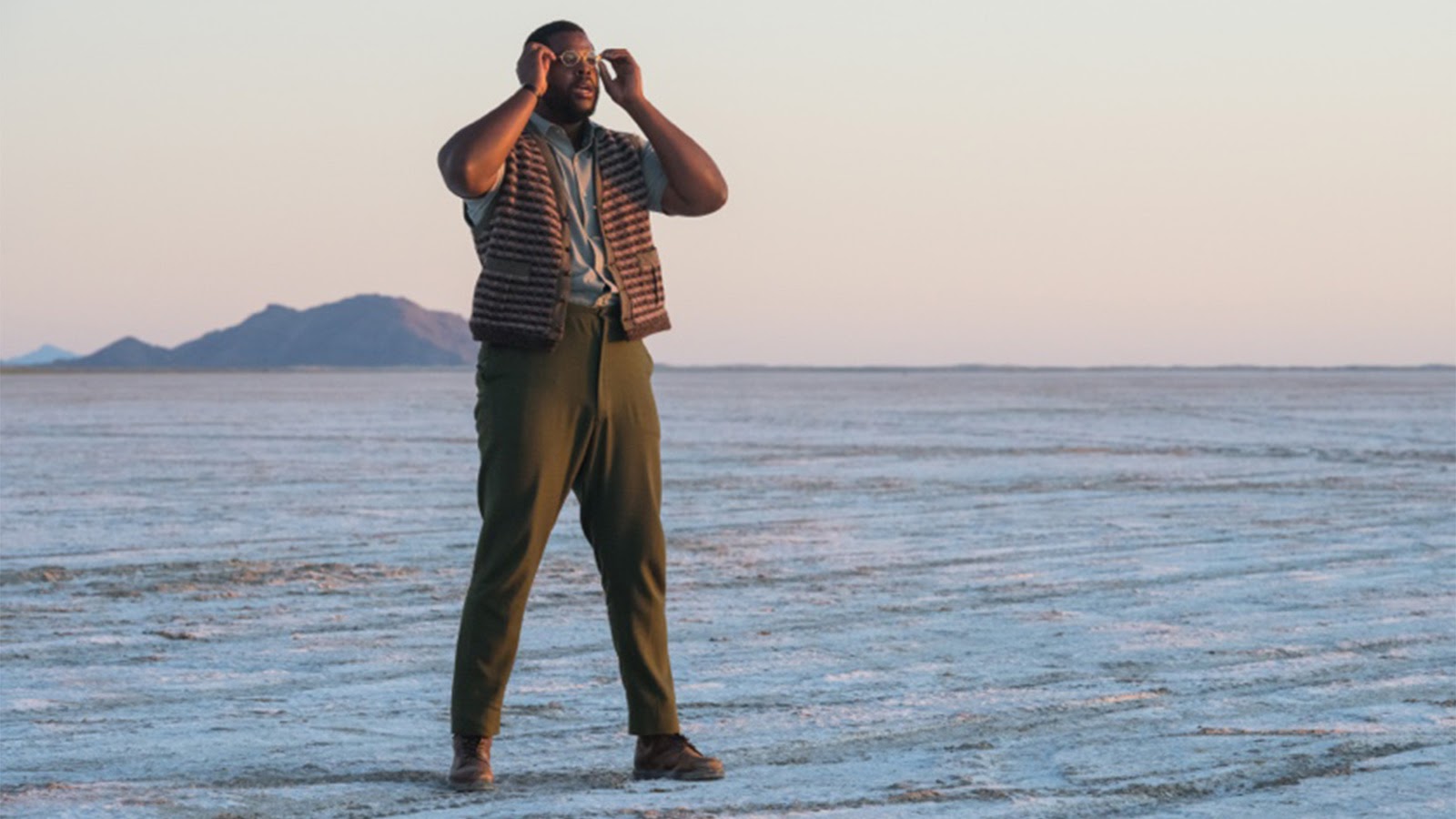
It was trickier than you’d think because we were dealing with the days and nights and tracking them and wanting to be really clear that this was nine days and not breaking that rule, but within that, we were still able to move a few things around.
TAYLOR: Winston’s character watches all these lives unfold in real time on these old-fashioned cathode-ray monitors. He’s also got a room in the house called the projection room, and he watches this character Amanda growing up because he’s become quite fascinated with her life.
Edson and I had come up with a very long montage there that ends with a big fight between Amanda’s parents I think. One of the first things that Jeff did when he came in was he said, “Why don’t you just have a couple of those shots and then have the door knock? Then, there’s Zazie.” Then, suddenly we’re having a really important moment with the Emma character two minutes earlier into the film. There’s a big difference between 25 minutes and 27 minutes.
People talk to me about that all the time asking, “How much do I pay attention to numbers in a timeline?” I try to pay a lot of attention because you want to be at a certain point in the film ideally by this moment. That was a great suggestion, Jeff, to cut that montage even though we liked it very much.

I do remember when we did that scene that you talked about earlier, Steve, where Will leaves the house at night and there’s a long tracking shot, we have beautiful music from Antonio, and then it goes to the junkyard. When I was first working on the movie with Edson on that junkyard scene, I don’t think we had any music yet and I think we were about 14 minutes into the cut when he’s just getting to the junkyard. Nothing has happened yet with any of the other characters. I think I said, “Edson, this is really a strange, weird movie. Do you think we can really have 14 minutes at the beginning of the movie when no one even talks?” But then I was thinking it’s a little bit like Wall-E or There Will Be Blood where you have these very strong visual openings to a film.
BETANCOURT: When I came onto the film, I don’t think there was ever much debate about shortening it because for me it always felt like a chapter close, like we were turning a page. That was that. Now we’re going to do this chapter turn, and it is moving onto the next thing and finishing that opening, which is so cacophonous with so much happening. So, to give you a chance to breathe, to be with Will for a minute, and exactly like you said, it’s a chance to move on to the next thing. It’s the first time we have score in the film that’s not violin-related. It’s saying, “This is Will’s theme.”
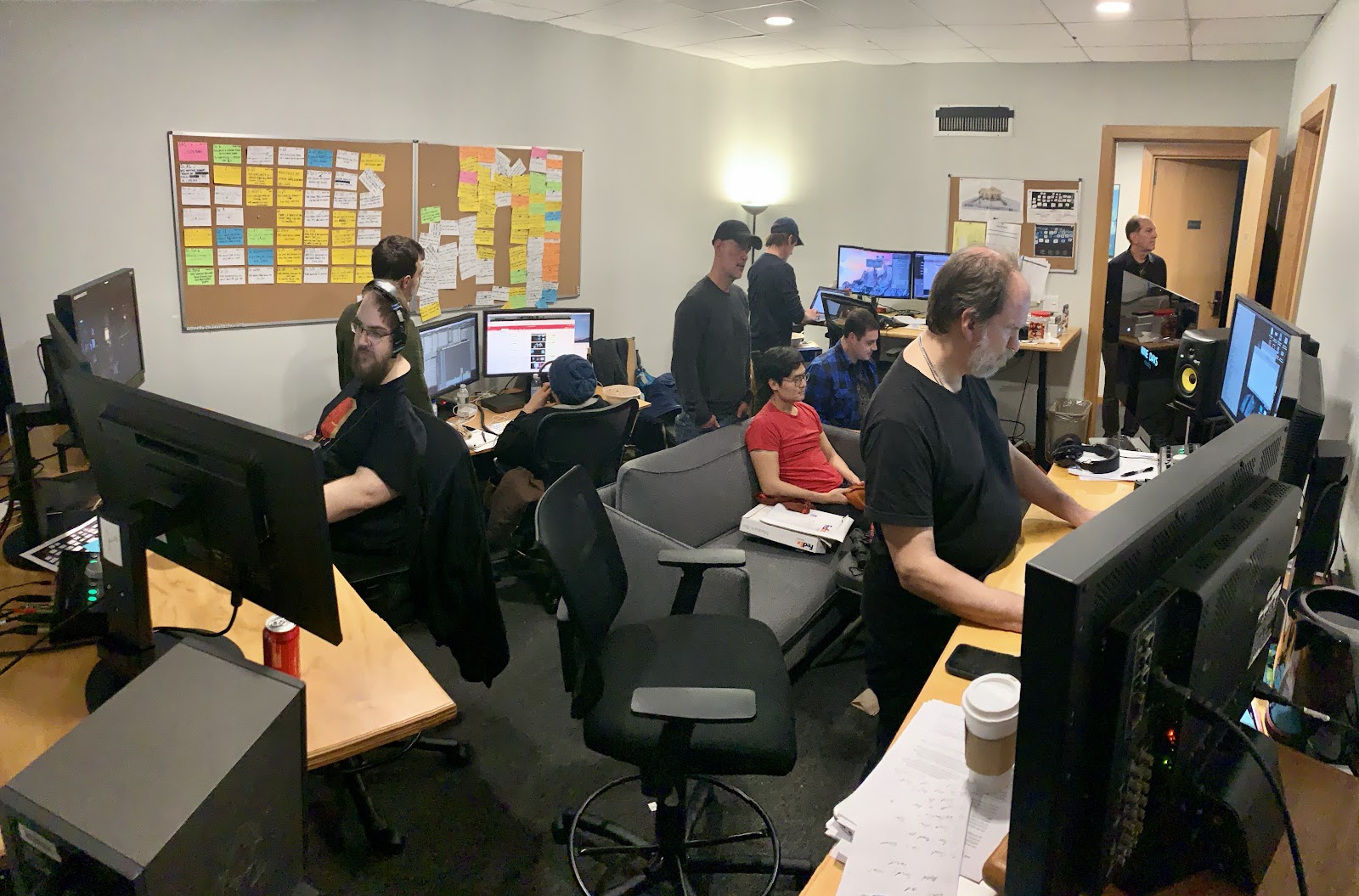
HULLFISH: Do you remember how long that first assembly was?
TAYLOR: Sometimes I save assemblies, but I rarely do because as soon as I start working with the director I sort of lose interest in the assembly at that point. Obviously, it exists as an Avid project file somewhere, but I don’t have any sense of the history of archiving it or anything. I know that everything I’m going to do with Edson and with everyone else here with Zack, Phillip, and Jeff is going to be much better than what I’ve done so far. But I think maybe it was around three hours.
HULLFISH: Do you cut the editor’s cut exactly to the script or do you allow for the editor to say, “Hey, look, we don’t need these opening three or four lines. We can just drop this scene.” Most people say no, that the editor’s assembly should be presented to the director as he shot it and as scripted. What’s your take on that?

ODA: It was funny because it was my first feature, so it was more like Michael taking the lead. He tries to put in everything, but also he adds his own.
TAYLOR: I do tend to find the assembly as a place to stretch out a film and to see how it can work in its longest form, but also I generally don’t like to call it an “editor’s cut.” I like calling it an assembly because that way we can say it’s just a version of the film. I would not presume to know more than Edson what the film should be. I always figure that’s something we’re going to discover during the process of the director’s cut.
HULLFISH: How early in the process did you guys start using Frame.io in your collaboration?
KIMSEY: It was what we used for our dailies. It was the very first thing that we were using as far as collaboration, especially when Michael went out to Salt Lake before I was allowed to go.
TAYLOR: Frame.io was great and it helped us to do a little bit of locking. Edson and I both knew that we really couldn’t lock these stories in these televisions if I wasn’t there in person with him. But for the rest of the show, we used Frame.io to pass cuts between us to show cuts to producers. In fact, for most of the edit, Jeff, Zack, Kwesi, Edson, and I were all in New York, but the rest of the producers were mostly in Los Angeles. We would have test screenings in New York that we would project at Goldcrest.
HULLFISH: Any other assets that you guys were trading through Frame.io? It sounds like VFX, cuts, and dailies? Any audio? Like score?
BOGER: Well, we were lucky enough to have our composer living across the hall from us for a good part of the edit. So, we could actually come in and say, “Look at this scene we have. What do you think?” Then, he’d run up to his room, compose something amazing, and then show up with it. It’s really an incredible way to work.
TAYLOR: Of course, most of the time Antonio was in Brazil, but for the last few weeks he was with us in New York. He was also there later at the mix at Skywalker.
HULLFISH: Thank you all so much for joining me and giving so much of your time.
TAYLOR: Well, thank you for your warm response, Steve. We appreciate it.

